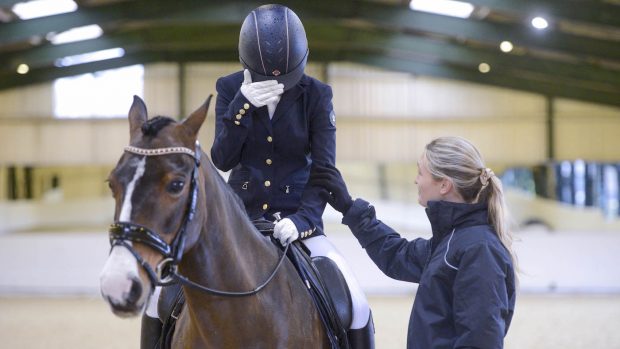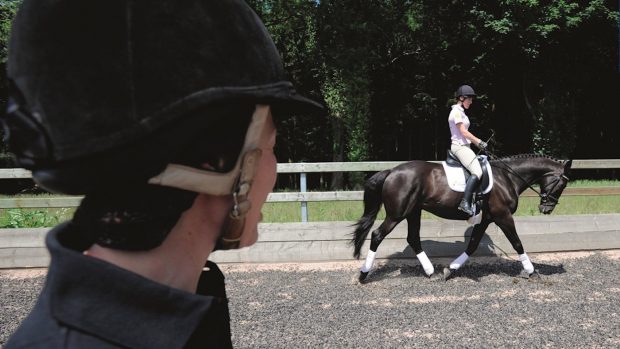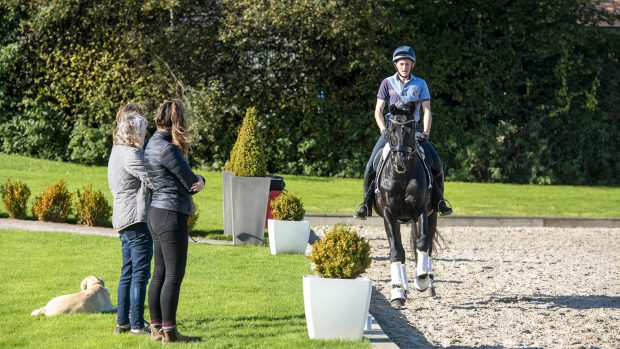How do you achieve peak performance? Whether you’re a top-level athlete or a happy hacker, having the right mindset while in the saddle is crucial, not only to ensure your horse or pony is going in the way you would like, but also for your own enjoyment and happiness.
At a recent talk surrounding the topic of ‘peak performance’, Zoe Taylor and Camilla Henderson, who are both sport and performance psychology consultants, shed light on how we as riders can achieve our optimal competition mindset, how to apply key mental skills to our performance and how to thrive under pressure.
Here are three topics covered by Zoe and Camilla during their talk, which could help improve your performance:
1. How to achieve the optimal mindset
First of all you need to stop and understand what your optimal looks like — what was your best day in the saddle?
– Can you visualize your peak?
– Have you ever had a taste for your peak?
– What were the processes you carried out on the day you performed at your peak level?
– What were your thought processes and behaviours that day?
Before we set the behaviour change to help realise a greater frequency of peak performance, we need to understand the process behind it, which we call C.B.T.
C.B.T is made up of three parts, which all affect each other:
Thought — what we think affects how we act and feel
Behaviour — what we do affects how we think and feel
Emotion — what we feel affects what we think and do
We often change our behaviours in a competition environment For example, the warm-up is a nasty environment — we have to be more gritty here than in the actual competition sometimes as we can be fearful and threat focused. We might become frantic and less patient on the horse, for example. To help work through this, think about the emotion you want and therefore the thought and behaviour that is required to achieve that. You must employ the tactics of thoughts first, then emotion in order for this to work.
2. The ABCs of evaluating thoughts
The ABCs model is how we evaluate our thoughts.
A — activating event — this is your immediate interpretation of an event and it is the reason behind why we do things and often, the cause of when things go wrong.
B — beliefs — this is your evaluation of the activating event and it will be either rational or irrational — we are looking to make this always rational.
C — consequences —this consists of emotions, behaviours, other thoughts and your actions taken after A. As well as B, this is also how we evaluate our thoughts
There is a final part to this model too, which id ‘D’ for disputing. This is an alternative belief that would lead to healthier consequences.
ABC in action
A — “I’ve just demolished a warm-up showjumping fence five minutes before I’m due in”
B — irrational — “I’m useless at this — I’m dreading it now, I can’t do this”
C — heart rate increases, franticness, panic mode, not doing simple things well, chaos, over-riding, in front of the movement
Go through it
A — what just happened?
B — can we make this rational? — I’ve done it 100 times before — so draw on past competence and ideally get over it and try again
C — what is the consequence now? You will start to do simple things well again
D — Dispute the belief — alternate the belief that would lead to a more ideal consequence — take a step back before stepping back in.
In the warm-up if something bad happens, go back to the things you do well before going back to the things you are less good at, to help you get through what you are trying to achieve.
Article continues below…
You might also be interested in:

13 performance psychology pointers to help improve your results
Read these top tips from performance psychologist, Charlie Unwin, to help you get a head start this season

6 ways positive psychology can make you a better rider
Professor Tony Ghaye discusses the ways in which positive psychology can impact riders and improve their standard of performance

Subscribe to Horse & Hound this spring for great savings
3. Utilising self-talk skills to optimise our performance mindset
Now we take a look at how you apply positive processes in response to dealing with stressful events. This is where we need an appreciation of self-talk. To do this we need to:
– Work out how we can reframe our thoughts
– Know what we optimally look like
– Visualise it
– Restructure the irrational thought/negative statement
You can use self-talk at any stage of training or competition and really is as simple as finding a phrase that works for you when you say it over to yourself. Some examples are:
“Commit to me”
“Breathe”
“We can do this”
“Let it go”
But make sure that whatever you’re saying to yourself has the right effect in that it makes you ride in a positive and sensible way.
For all the latest news analysis, competition reports, interviews, features and much more, don’t miss Horse & Hound magazine, on sale every Thursday





